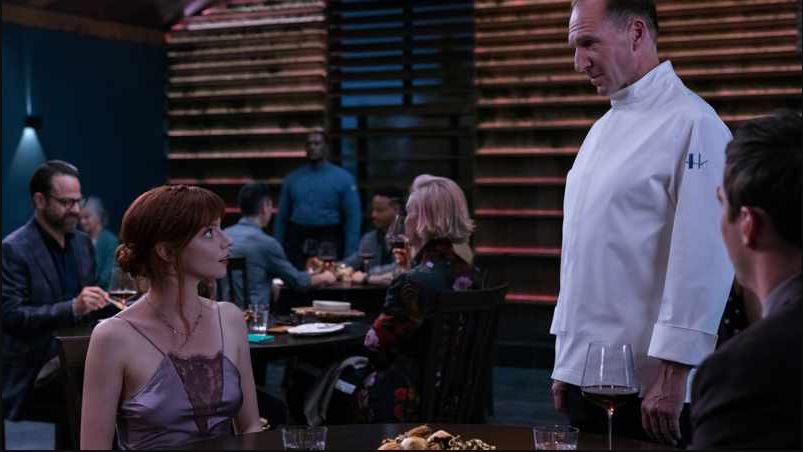
Ralph Fiennes, Anya Taylor-Joy, and Nicholas Hoult feature in the dark comedy horror film “The Menu,” which centres on a group of affluent foodies visiting a secluded, expensive restaurant.
However, the staff’s cult-like devotion to the renowned chef who owns and operates the restaurant soon makes clear that there is a more nefarious game at hand.
“The Menu” is more explicitly about the restaurant industry even if it plays with concerns about food.
It draws inspiration from a long history of horror movies about creative people who become insane due to public pressure and consumer demands.
Artists not only exact retribution on those who devour their labour (agents, critics, and consumers) in films like “Mysteries of the Wax Museum” (1933), “The Phantom of the Opera” (1962), and “Theatre of Blood” (1973), but they also exploit these victims as the raw materials for their creations.
Instead of being consumers of its products, they turn into components of the production process.

In scene from The Menu, Ralph Fienne is picture on the right in chef’s whites and talking to Anya Taylor-Joy, who dressed in a pink silk slip dress.
This explains why Margot (Taylor-Joy), the uninvited guest at the meal, upsets “The Menu’s” mad Chef Slowick (Fiennes).
If you are a member of his brigade of producers or a member of the consumer class, he “has to know whether you are with us or with them.”
The behaviour of the kitchen crew throughout the evening exemplifies the dehumanising discipline and sacrifice required to prepare food for the affluent.
While this is happening, their allegiance to Slowick oscillates between that of a proletarian army rising up against its oppressors and the armies of the dead led by aristocratic despots like Dracula.
The depiction of cooking also addresses “The Menu’s” concern with class and the division between the service personnel and the affluent patrons they serve.
Like many upscale eateries, Slowick’s place has an open kitchen, so the meal isn’t just about the food eaten; it’s also an illustration of dining as a “theatrical experience.”
The explanation for increasingly bleak circumstances is this “theatrical experience”. They are only a component of the mentally demanding experience provided to customers. However, it also highlights a different facet of class distinction: a matter of taste.
With his back to the camera, Fiennes peers out at his spotless, contemporary eatery. The wall behind is actually a floor to ceiling window that overlooks the untamed, rocky exterior.
The taste of the upper classes is described by the French sociologist Pierre Bourdieu as “a systematic rejection of anything that is ‘human’… starting with everything that lowers the aesthetic animal to pure and basic animality, to tactile pleasure and desire.” Or perhaps food that only satisfies hunger, one might add.
Therefore, on the one hand, Slowick’s actions carry his premium clientele’s desires to their logical conclusion. He begins by refusing “usual” pleasures like sating their hunger, but gradually transitions to a cruel practise of body control and punishment.
Slowick elevates the fine dining experience past the intellectually taxing and into the realms of agony, punishment, and torture.
denying the denying
Of course, complaining that you are still hungry or, worse yet, demanding that anything prepared that haute cuisine forbids is the most insult to distinction within the exclusive restaurant.
The moment “The Menu” comes to a boil is when Margot orders a plain burger and fries, a dish that contrasts sharply with Slowick’s intellectually demanding gourmet cuisine.







